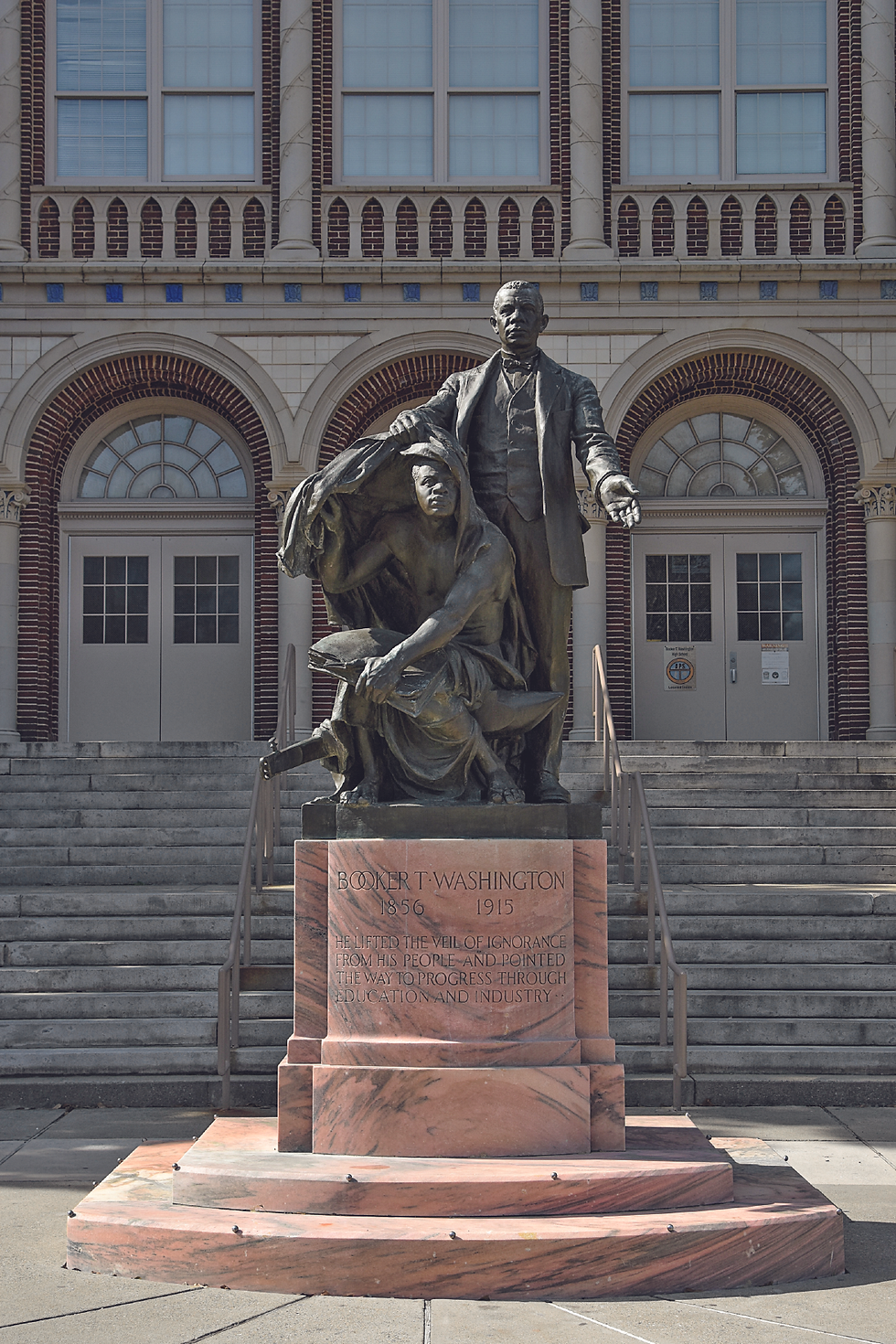Black History Is All Around Us
- Karen Seiger
- Feb 27, 2022
- 4 min read
February 2022 is coming to an end, and with it ends Black History Month in the United States. While dedicating a single month to the history of so many people makes us think, remember, and hopefully learn more about it, the fact is that Black History matters at all times. 111 Places guidebooks aim to highlight compelling stories and places of great pain and also great enlightenment in the history of Black Americans.
Here are some places in Black History that you must not miss!
Atlanta, Georgia: Booker T. Washington Lifting the Veil of Ignorance
Booker T. Washington was born enslaved, and he would become a great educator. The statue by artist Charles Keck that is featured in 111 Places in Atlanta That You Must Not Miss stands in front of Booker T. Washington High School, a replica of the original which you can visit at Tuskegee University in Alabama. The words etched in the stone read, "He lifted the veil of ignorance from his people and pointed the way to progress through education and industry.
Austin, Texas: Heman Marion Sweatt Travis County Courthouse
Heman Marion Sweatt was denied entry to the University of Texas School of Law in 1946 because he was Black. Sweatt filed a lawsuit that same year, setting off a series of legal processes. He was finally able to enroll in law school in 1950, opening the doors to education and closing them on segregation. Sadly, he never finished his law degree, largely due to stress of the fight for his rights, but he continued working tirelessly for civil rights during his life. In 2005, the Travis County Courthouse, where his case was heard, was named in his honor, and a $10,00 scholarship was established for future UT law students. Learn more about this story with 111 Places in Austin That You Must Not Miss.
Baltimore, Maryland: Black History in the Metro Stations
Baltimore's Metro system features 16 permanent Black History art installations, four of which were designed by local artists. The most famous of all the pieces is Uproar in the Upton Station, a lively mosaic that is a memorial to music icon Billie Holiday, who grew up in Baltimore. The artist Romare Bearden was a member of the Harlem Renaissance in New York City. His many works examining the relationships between members of the African American community made him one of the most highly regarded artists of the 20th century. Learn about the other wonderful works of art in the metro system in 111 Places in Baltimore That You Must Not Miss.
Columbus, Ohio: The Underground Railroad
In the central section of the 25-mile Alum Creek Trail in Columbus, you’ll cross a bridge over a creek located on the campus of Ohio Dominican University. On that bridge, you'll find a marker commemorating the role of this creek and other local tributaries in helping enslaved people escape to freedom on the Underground Railroad. Ohio had the most extensive network of safehouses along this route to freedom, which was, as the marker states, “A system of loosely connected safe havens where those escaping the brutal conditions of slavery were sheltered, fed, clothed, nursed, concealed, disguised, and instructed during their journey to freedom." Learn more about the the history here in 111 Places in Columbus That You Must Not Miss.
Milwaukee, Wisconsin: Hank Aaron's 755th Home Run
When Brewer Hank Aaron stood at the plate in Milwaukee County Stadium on July 20, 1976, few realized that the 755th home run he hit would be his final one. This Major League record would stand for 33 years. By 2007, Milwaukee had replaced the old stadium with Miller Park, and Barry Bonds, amid accusations of performance-enhancing drug use, was closing in on Hank’s record. As a sort of call for decency in sports, and in defense of what people saw as Aaron’s more legitimate record, the Brewers set out to commemorate Aaron with a plaque where his final home run landed. Learn how they determined the exact spot in 111 Places in Milwaukee That You Must Not Miss.
New Orleans, Louisiana: Tomb of the Unknown Slave
The is cross made of thick chain has rusting shackles hanging from it. You can visit the Tomb of the Unknown Slave on the grounds of St. Augustine Church, which was founded in 1841 by free people of color on land that was formerly a plantation. St. Augustine is the oldest African-American parish in the United States, and this powerful memorial serves to commemorate the enslaved people everywhere who lost their lives and their stories. Everyone is welcome at this church, and you can find out more about the memorial 111 Places in New Orleans That You Must Not Miss.
Twin Cities: Prince's Neighborhood
When he died in 2016, Prince was living at Paisley Park, the recording and performance mega-complex. Paisley Park is now a museum, where you can go on guided tours that celebrate Prince's creative process and get a peek into his personal life, including the tiny living room where he used to watch the Timberwolves and the Lynx play on TV. You'll find the original motorcycle from Purple Rain and many more objects and artifacts from Prince's magnificent and influential career. Learn about Paisley Park and follow Prince's footsteps across the Chanhassen neighborhood with 111 Places in the Twin Cities That You Must Not Miss.
These are just some of the many places celebrating and commemorating the history and contributions of people from all walks of life in every 111 Places guidebook. Visit our website to find guidebooks to your favorite cities and regions!








Comments